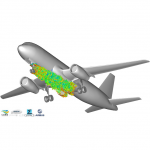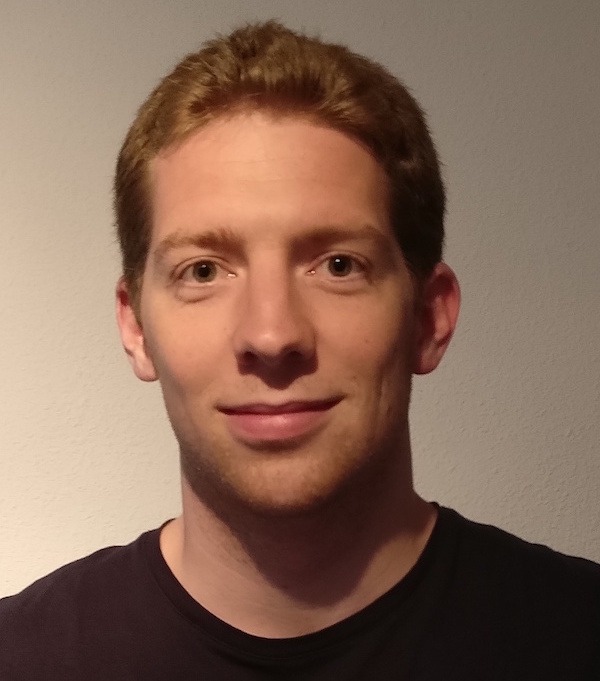 The Lattice Boltzmann Method (LBM), derived from the gas kinetic theory, has emerged as an alternative to the resolution of Navier-Stokes equations using computational fluid dynamics. LBM is an unsteady method and has several strengths: (1) easy mesh generation on complex geometry and (2) allows massively parallel computing. This training aims at providing basic knowledge on how LBM works for single-phase flows.
The Lattice Boltzmann Method (LBM), derived from the gas kinetic theory, has emerged as an alternative to the resolution of Navier-Stokes equations using computational fluid dynamics. LBM is an unsteady method and has several strengths: (1) easy mesh generation on complex geometry and (2) allows massively parallel computing. This training aims at providing basic knowledge on how LBM works for single-phase flows.
Next sessions
From Monday 11th January, 2021 to Friday 5th February, 2021
Deadline for registration: 15 days before the starting date of each training
Before signing up, you may wish to report us any particular constraints (schedules, health, unavailability…) at the following e-mail address : training@cerfacs.fr
Price: students : 240 € – Cerfacs shareholders : 360 € – others : 480 € (Taxes not included)
Satisfaction index

In 2020, 100% of participants were satisfied or very satisfied (results collected from 2 respondents).
Context
The Lattice Boltzmann Method (LBM), derived from the gas kinetic theory, has emerged as an alternative to the resolution of Navier-Stokes equations using computational fluid dynamics. LBM is an unsteady method and has several strengths: (1) easy mesh generation on complex geometry and (2) allows massively parallel computing. This training aims at providing basic knowledge on how LBM works for single-phase flows.
Scientific content
This online training course presents the fundamental concepts of the Lattice Boltzmann Method (LBM) for single-phase flows. It is divided in 3 consecutive weeks:
- week 1: introduction to LBM: why and what for?
- week 2: the Bolztmann equation and the kinetic theory
- week 3: solving the Boltzmann equation: the Lattice Bolztmann Method
An interactive live conference will close the session and will deal with an application case where you will try to predict the stability of a system. This conference will be held during week 4.
Learning outcomes
At the end of this training, you will be able to:
- evaluate the relevance of using LBM for a given case: benefits and limitations compared to the traditional resolution of the Navier-Stokes equations,
- choose the appropriate lattice depending on physical phenomena of interest,
- explain the numerical efficiency of LBM from the point of view of HPC: multiprocessing and wall-clock time.
Organization
This is a fully online training session. It is divided into 4 consecutive weeks, based on learning activities delivered each week.
- Week 1 to week 3 require around 2 hours of work per week. Learning activities are released on Monday of each week and you have 7 days to complete each week's activities. The 2 hours of work can be distributed over the week, depending on your schedule.
- A 1 hour live interactive session will hold during week 4. This live session will deal with an applicative case. This live session will also be recorded.
- Last week is dedicated to revising and a final exam, leading to a certificate of learning.
Our pedagogical principles
All our learning sessions are built upon evidence-based principles from cognitive psychology and learning research:
- concepts first: the course is focused on conceptual understanding of the meaning of equations and how they apply in practical cases (Van Heuvelen, 1991).
- active learning: the course is organized around activities especially designed to make participants interact between each other, involving a deep processing of the scientific content previously shown in short videos (Salmon, 2013).
- long-term retention and transfer: because you need to apply what you will learn during this session in the future and in various contexts, our courses are designed using the 10 laboratory-tested principles drawn from cognitive psychology (Halpern and Hakel, 2003).
Be prepared to be engaged and to interact with a community sharing a common goal: learning the scientific content of this course.
Teaching methods
The training is an alternation of theoretical presentations and practical work. Multiple choice questions allow a continuous evaluation.
Requirements
While this course is not focused on mathematical aspects, a background in mathematical analysis and probabilities (expected value, standard deviation and normal distribution) are needed. Moreover you need a strong background in Computational Fluid Dynamics. To verify that the prerequisites are satisfied, the following questionnaire must be completed. You need to get at least 75% of correct answers in order to be authorized to follow this online training session.
Questionnaire 1 : https://forms.gle/DoGhqiemAmDFAsML6
The training takes place in English; level B2 of the CEFR is required.
Evaluation of learning
A final exam will be conducted during the training.
Referent teacher
Jean-Christophe JOUHAUD
Realized with the assistance of the following researchers :
 |
Pr. Pierre SagautUniversity Professor, leader of the M2P2 lab, Pierre Sagaut is one of the creators of ProLB software based on LBM and specialized in aerodynamic and aeroacoustic modeling. He is also a specialist of Large Eddy Simulation of turbulent flows and the author of the famous book Large Eddy Simulation for Incompressible Flows. |
 |
Dr. Christophe CoreixasChristophe Coreixas received his PhD in Statistical Physics from INP Toulouse, France. During his PhD, he worked on high-order lattice Boltzmann methods for the simulation of high-Reynolds and high-Mach number flows. |
 |
Dr. J-F. ParmentierHe gets his PhD in Fluid Mechanics working on modeling of two-phase gas-particle flows, deriving Euler-Euler models from the Boltzmann equation. Since 2014 he has oriented his research specifically on learning and teaching science using active learning methods. |
 |
Dr. Thomas AstoulHolder of a PhD, T. Astoul worked for three years at Airbus using the Lattice Boltzmann method for aircraft simulation. |
 |
Eng. Gauthier WissocqHolder of a PhD, Gauthier Wissocq started studying the Boltzmann lattice method at CERFACS in 2015, working for Safran on the application of LBM to aircraft engine simulations. |
 |
PhD student, Florian RenardHolder of a PhD, F. Renard worked on the extension of the LBM to aeronautical compressible flows. |
 |
Eng. Jean-François BoussugeDeputy team leader of the CFD Team at Cerfacs, his field of expertise is numerical methods to perform highly-resolved aero-acoustic and aerodynamic simulations. He works in the LBM field since 2013. |

